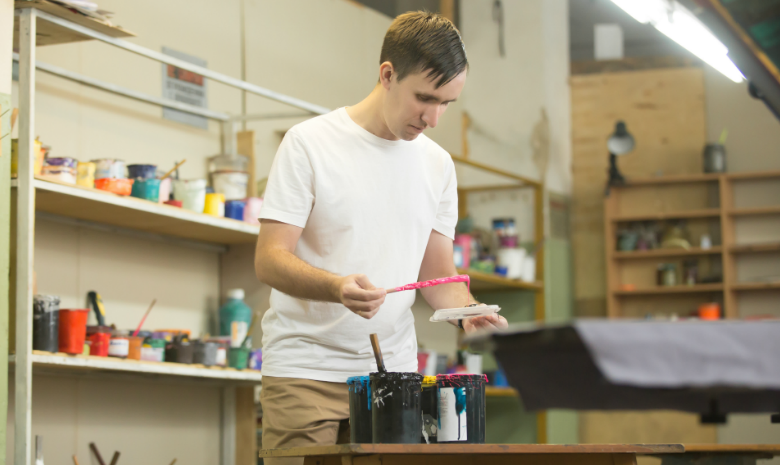Word to the Wise: Contract Printing with a Manual Press
Why not take a few contract jobs? People need T-shirts; you need work to do. It's a win-win, right?

Fill up the presses, pump out the work, read, set, print!
The allure of maximizing production and increasing profits is tempting for any business but especially for smaller and growing manual screen-printing shops. Why not take a few contract jobs? People need T-shirts; you need work to do. It’s a win-win, right? Not so fast. Just because you can get the work, doesn’t mean you should print it.
After helping 150,000+ people get into screen printing, we’ve been fortunate to see first hand when contract printing makes sense, and it doesn’t for a manual screen printing shop. This article will cover a few “what to look for” and “what to avoid” points when it comes to contract work on a manual press.
When it doesn’t make sense
Most contract jobs are bid on price with run size, delivery time, and quality also taken into consideration along with 100 different other variables that are in play, like ink and garment construction.
With all this to consider, the only place a manual printer can truly compete is run size and possibly delivery time. The labor per print in a manual print shop typically ranges between $.50-$1 per shirt. To calculate this, take your direct labor (printer burden overhead hourly rate for a full day) and divide it by how many shirts your press can produce, including setups and teardowns. Average supplies per screen print are typically around $.15 for a manual shop. Then you have to consider a margin for error (which is higher on a manual press) and management and other business overhead costs.
You should know your full cost per shirt before you make any money. To calculate this, add up all your direct and indirect expenses over an average month, then divide it by how many shirts you print. For example, if your shop costs you $7,000 per month to run, and you print 3,500 shirts per month manually, each shirt costs you $2 to produce.
So, looking at it through that lens, a manual screen printer should be charging at least $3-$5 for contract per shirt to make a decent margin, and the reality is a lot of work sells for 10% of that.
Some common misconceptions are not considering your time and worth in the equation. I can’t tell you how many times I’ve seen new print shop owners take in thousand-piece runs only to toil through the night making less than minimum wage when its all said and done. I don’t think you started a business to do that, right? The bottom line is that you need to know your direct and all-in burdened cost per print before you bid any contract work or increase your overhead by hiring people to do it. There are some helpful videos and tools out there on how to price jobs, here is one based on the Made To Make It book.
When it does make sense
- Small runs, custom jobs, fast turns. These scenarios play into a higher price per print, which plays into the ability of a growing manual shop to take on some contract work to fill the press time.
- Subcontract. Find a reliable, good quality contract screen printer in a major screen-print market and develop a relationship with them. You may be able to subcontract jobs and still make a 20%, or more, margin. Also, if they have smaller-run, higher-margin jobs they can’t take on, you could be the right solution for them.
- Scaling. Finding a good contract and locking it in can be an excellent way to scale up your shop into automation. Finding the right partner who needs reliable, consistent contract work done can build the case for you to get an automatic and be able to increase your speed and consistent quality while cutting your cost per print by 100-300%. Word of caution, when you’re getting an auto to make money contract printing, be sure you get one that is up to the task. There are a lot of entry-level and used automatic presses out there that aren’t much better than a good manual at the end of the day.
Know what you’re getting into and what you’re getting out of it before you give a straight “yes” to fill the press up.